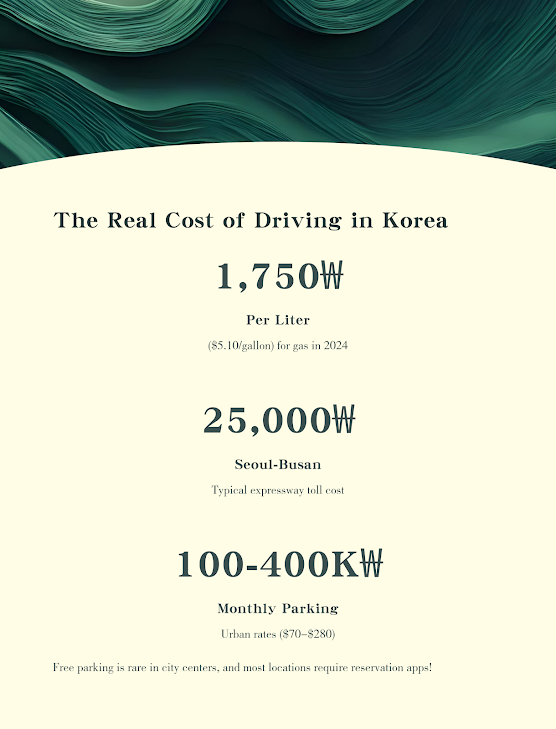From traffic laws to car culture, here's what stands out when hitting the road in Korea
Getting a Driver’s License – Swap or Test?
If you’re a U.S. citizen moving to Korea, you may be able to exchange your U.S. license
for a Korean one without taking a full driving test.
However, this depends on your home state—some require a written exam.
Without an exchange agreement, you’ll need to go through a driving school, theory test, and practical exam,
which can be time-consuming and costly.
Most expats find the exchange process the fastest route.
Buying a Car – New, Used, or Lease?
Cars in Korea tend to be more expensive than in the U.S., especially imports.
Used cars are a popular choice for expats, with English-speaking dealerships available in areas like Yongsan.
Leasing is less common than in the U.S., and most people pay in cash or use installment loans.
You'll need an Alien Registration Card (ARC), and insurance is mandatory.
Expect more paperwork, but the process is still relatively smooth with help from a local agent.
Gas, Tolls, and Parking – The Real Cost of Driving in Korea
Gasoline is more expensive in Korea, averaging nearly twice the U.S. price per gallon.
Toll roads, like expressways, are common and can add up quickly on long trips.
Seoul and other major cities have limited parking, and many apartment complexes charge monthly parking fees.
Public garages exist but can be pricey,
so owning a car in the city comes with hidden costs Americans may not expect.
Navigation and Road Signs – Adjusting to a New Driving Culture
Most road signs in Korea are bilingual (Korean and English),
but some local signs may only be in Korean, especially in rural areas.
GPS apps like Kakao Navi and T Map are widely used,
though they require some Korean language skill.
Driving style also differs—expect more aggressive lane changes, tighter spaces, and scooter-heavy roads, especially in cities.
City vs. Countryside – When Owning a Car Makes Sense
In central Seoul, a car often feels more burdensome than helpful.
The subway system is fast, affordable, and more convenient than driving.
However, in the countryside or for families with children,
a car can provide freedom, flexibility, and access to areas off the public transit grid.
Owning a car in Korea is more about lifestyle needs than daily commuting.
Car Culture and Social Norms – What Surprised Me Most
Koreans take pride in clean, well-maintained vehicles, and car detailing is common.
It’s not unusual to see luxury brands like Genesis or Mercedes on narrow local roads.
Drivers tend to use hazard lights to say "thank you"
and double-parking is common (and tolerated) in many neighborhoods.
For an American, Korea’s driving culture feels like a mix of structure, spontaneity, and small surprises.







